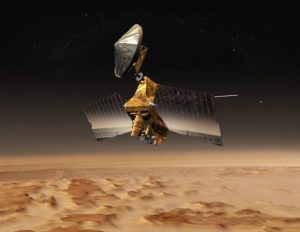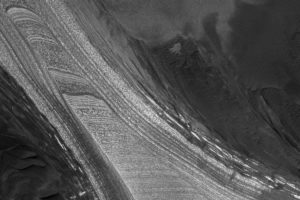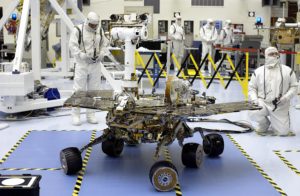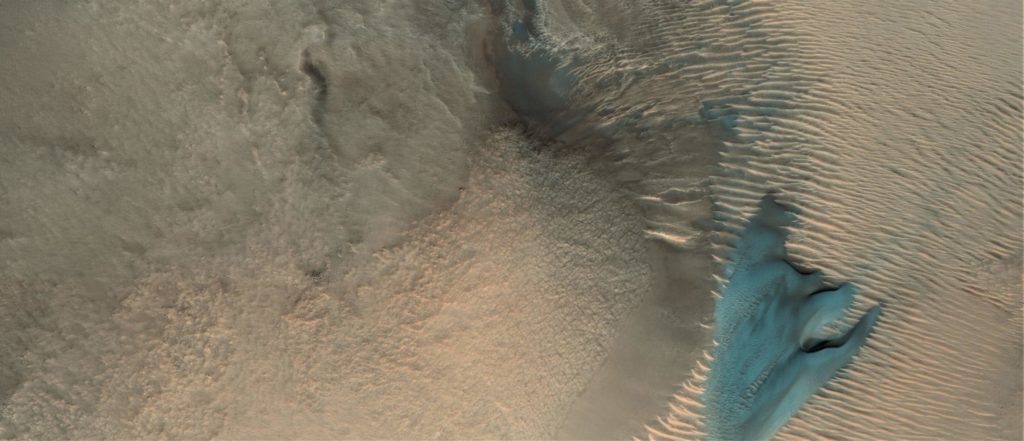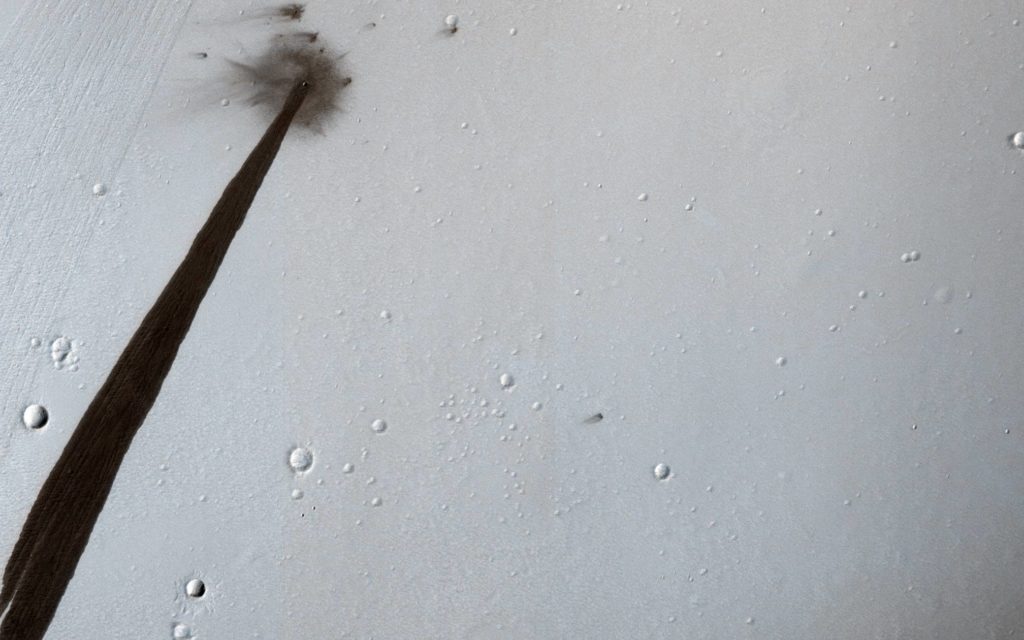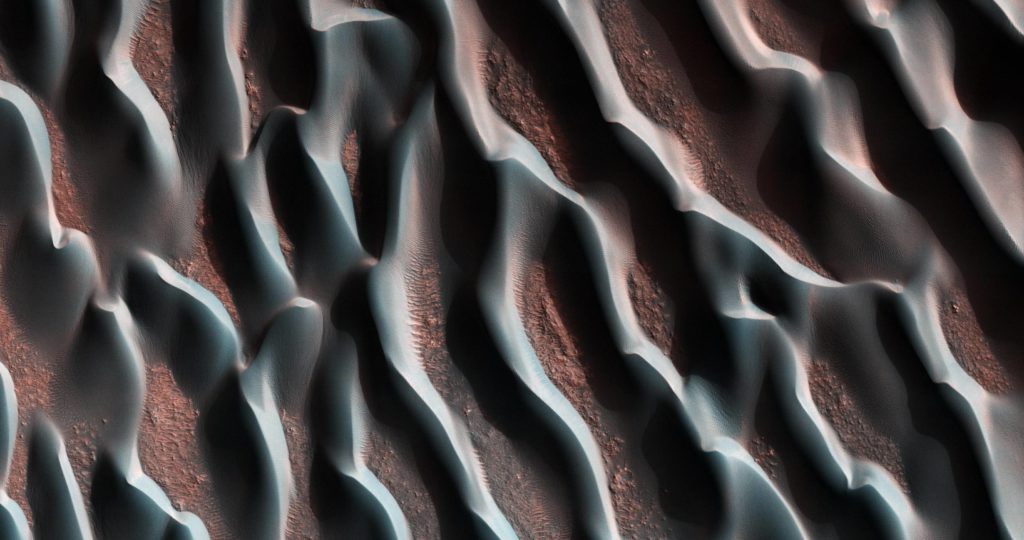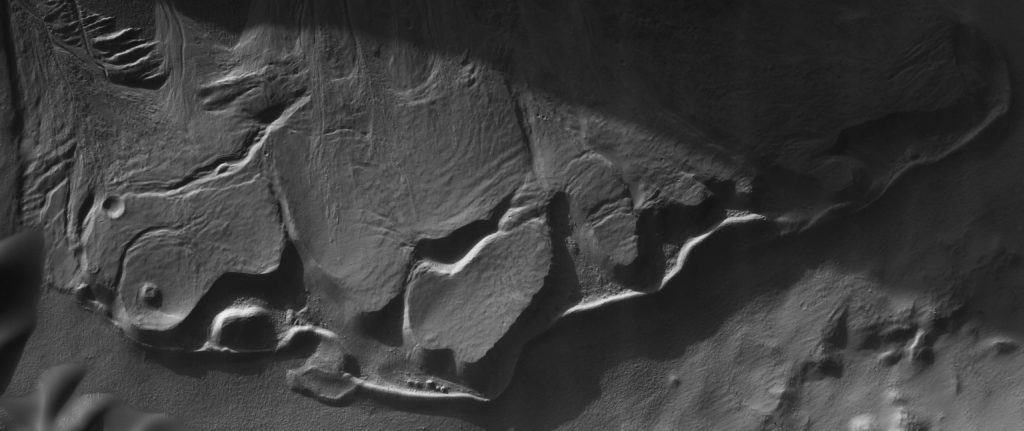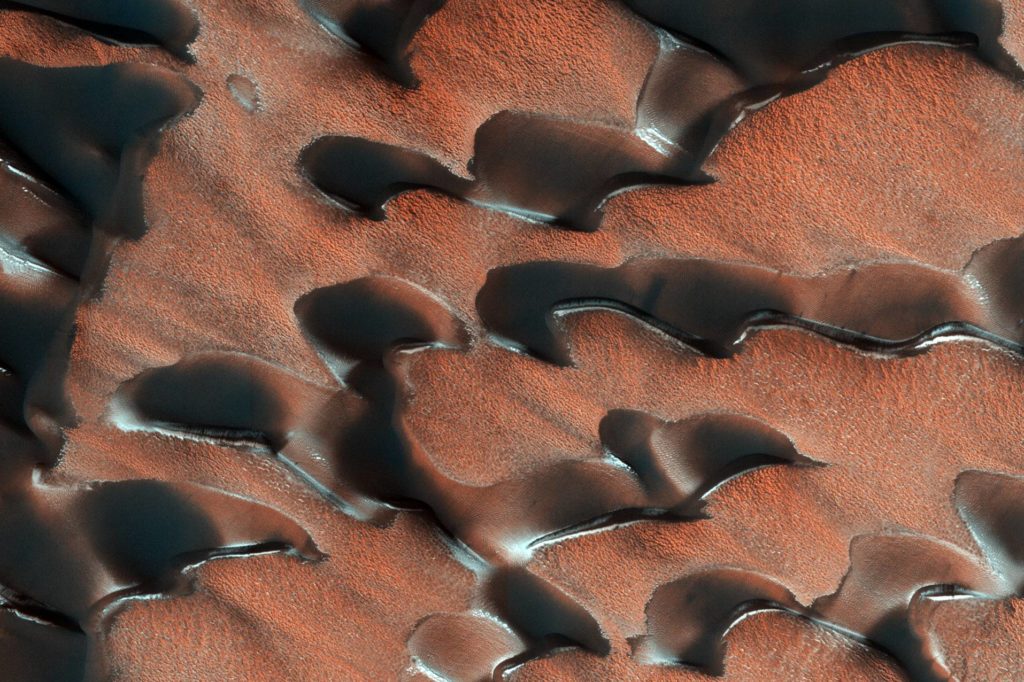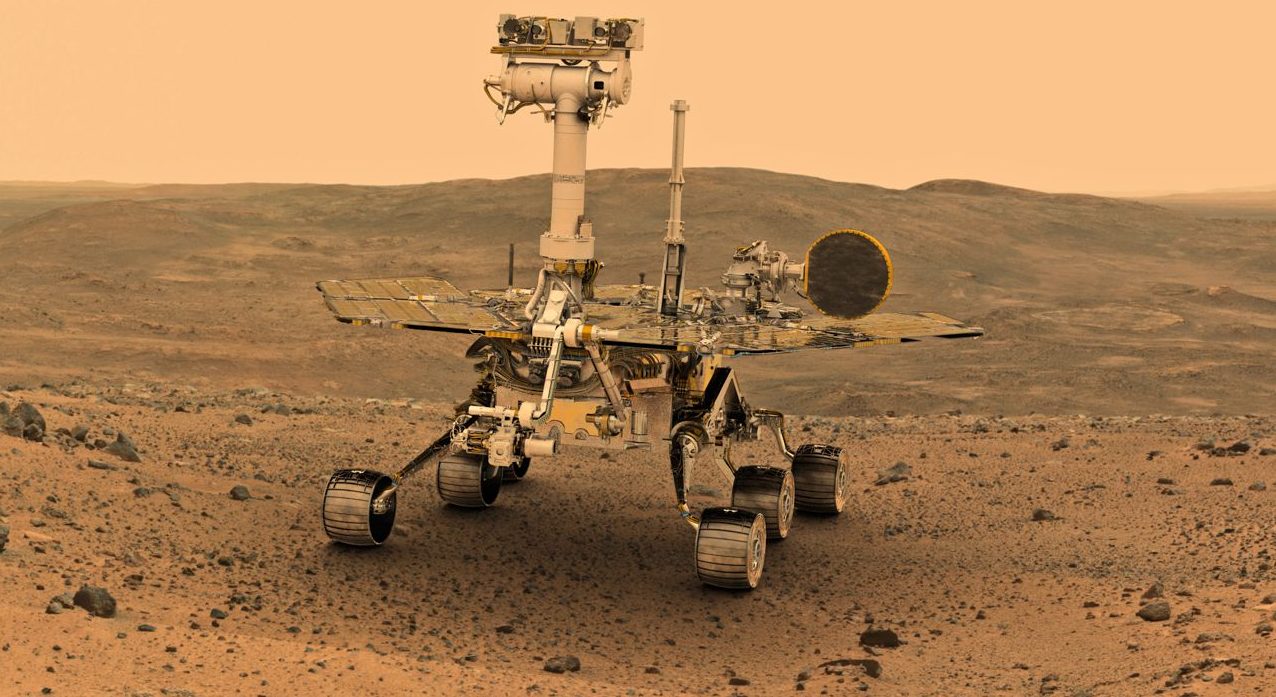
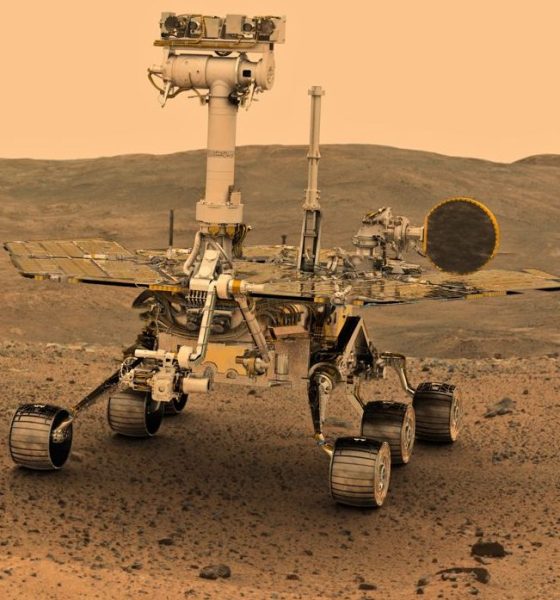
News
NASA orbiter captures beauty of Mars as global storm forces rover hibernation
Although NASA’s 14-year old Opportunity rover is currently trapped in a state of low-power hibernation in an effort to weather a record-breaking global dust storm encompassing Mars, the agency’s equally venerable Mars Reconnaissance Orbiter (MRO) – now in its 12th year of operations – remains a stoic overwatch and witness to the struggles of its land-locked companions.
Although MRO may be nearing its teenage years in orbit around the Red Planet, the Lockheed Martin-built spacecraft is currently the backbone of Mars-Earth communications, acting as a critical relay between the Curiosity and Opportunity rovers on the planet’s surface and its Earthly operators that are several tens of millions of miles distant. Thankfully, the European ExoMars Trace Gas Orbiter (TGO) and NASA’s new MAVEN orbiter are able to augment MRO’s communications capabilities in the event that problems arise with the old spacecraft, as well as the even older 2001 Mars Odyssey, an orbiter launched in 2001, a name inspired by fantasy/science-fiction film 2001: A Space Odyssey.
- A rendering of MRO, antenna and camera at the ready. MRO is a vital communications relay for rovers like Opportunity and Curiosity. (NASA/HiRISE)
- Extraordinary patterns are par for the course when dealing with Martian terrain. A polar ice cap’s many layers are pictured here. (NASA/HiRISE)
- The Mars Exploration Rover (also known as Opportunity) prepares for launch in 2003. Oppy may be small, but the rover has remained functional and still roves Mars more than 14 years after it landed on the Red Planet. (NASA)
Aside from its currently unmatched communications relay capabilities, MRO’s second science mission is mentioned in its name – reconnaissance. Enter HiRISE (High-Resolution Imaging Science Experiment), by far the most capable imaging system to ever orbit another planet, and funnily enough even more capable than Earth-bound imaging satellites as a result of its ability to stably remain in extremely low Martian orbits, thanks to the planet’s low gravity and minimal atmosphere. MRO and its HiRISE imaging hardware currently orbit Mars at an average altitude of roughly 175 miles (280 km) and are able to take photos with a resolving power upwards of 30 centimeters per pixel (0.3m/px), whereas the absolutely best and fully-dedicated Earth imaging satellites are currently limited by a combination of physics and technological complexity to roughly 50 centimeters per pixel (0.5m/px).
- An overview of the terrain surrounding the blue dune. (NASA/HiRISE)
- And the blue dune itself, captured a few months prior in 2017. (NASA/HiRISE)
As a result, HiRISE has produced some of the highest-resolution (if not the outright best) photos of an extraterrestrial body of any spacecraft to leave Earth orbit. Although an inherent delay in data collection and image processing means that no images have been published by HiRISE since Mars was enveloped in a global dust storm in June 2018, images from late 2017 and early 2018 serve to emphasize the staggering beauty and variety of the many landscapes Mars has to offer. Perched miles above, MRO may once again hear from the beleaguered rover Opportunity (as the dust storm subsides over the coming weeks and months, allowing appreciable quantities of sunlight to grace the rover’s solar panels and bring it back to life from its state of indefinite slumber.
In the meantime, we can try to appreciate the awe-inspiring, austere beauty of Mars, from its vast poles of water and carbon dioxide ice and bright blue sand dunes to its sprawling mazes of chaos terrain.
- After being struck by a small meteor, a Martian hill experiences a dramatic landslide, known as slope lineae.And the blue dune itself, captured a few months prior in 2017. (NASA/HiRISE)
- Some of many thousands of wild, massive dunes spread across the surface of Mars. (NASA/HiRISE)
- Intense lave flows make for an alien Martian landscape, August 2017. (NASA/HiRISE)
- Another extraordinary Martian dunescape, captured by HiRISE in November 2017.And the blue dune itself, captured a few months prior in 2017. (NASA/HiRISE)

News
Tesla ramps hiring for Roadster as latest unveiling approaches
Tesla published three new positions for the Roadster this week, relating to Battery Manufacturing, General Manufacturing, and Vision Engineering.
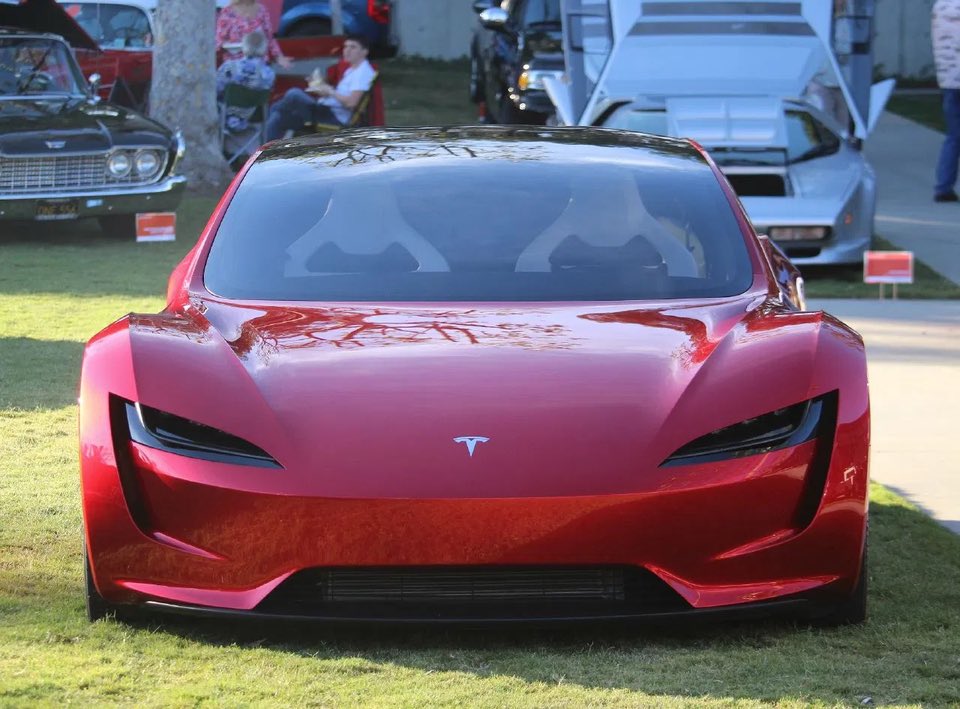
Tesla is ramping up hiring for positions related to the Roadster program, the company’s ultra-fast supercar that has been teased to potentially hover by CEO Elon Musk.
The company seems to be crossing off its last handful of things before it plans to unveil the vehicle on April Fool’s Day, just about four months away.
Tesla published three new positions for the Roadster this week, relating to Battery Manufacturing, General Manufacturing, and Vision Engineering. All three are located in Northern California, with two being at the Fremont Factory and the other at the company’s Engineering HQ in Palo Alto.
Technical Program Manager, Battery Manufacturing
Located in Fremont, this role specifically caters to the design of the Roadster to factory operations. It appears this role will mostly have to do with developing and engineering the Roadster’s battery pack and establishing the production processes for it:
“You will foster collaboration across design engineering, manufacturing, quality, facilities, and production to align with company priorities. Additionally, you will understand project opportunities, challenges, and dependencies; translate scattered information into concise, complete messages; and communicate them to every team member. As the business process development lead, you will develop, maintain, and implement tools and processes to accelerate battery manufacturing execution, achieve cross-functional alignment, and deliver highly efficient systems.”
Manufacturing Engineer, Roadster
Also located in Fremont, this role also has to deal with the concept development and launch of battery manufacturing equipment. Tesla says:
“In this role, you will take large-scale manufacturing systems for new battery products and architectures from the early concept development stage through equipment launch, optimization, and handover to local operations teams.”
Manufacturing Vision Engineer, Battery Vision
This position is in Palo Alto at Tesla’s Engineering Headquarters, and requires the design and scale of advanced inspection and control systems to next-generation battery products:
“You’ll work on automation processes that directly improve battery performance, quality, and cost, collaborating with world-class engineers in a fast-paced, hands-on environment.”
Developing and deploying 2D and 3D vision and measurement systems from proof-of-concept to deployment on high-volume battery manufacturing lines is part of the job description.
Roadster Unveiling
Tesla plans to unveil the Roadster on April 1, and although it was planned for late this year, it is nice to see the company put out a definitive date.
Musk said on the Joe Rogan Experience Podcast in late October:
“Whether it’s good or bad, it will be unforgettable. My friend Peter Thiel once reflected that the future was supposed to have flying cars, but we don’t have flying cars. I think if Peter wants a flying car, he should be able to buy one…I think it has a shot at being the most memorable product unveil ever.”
Production should begin between 12 to 18 months after unveiling, so we could see it sometime in 2027.
Investor's Corner
Tesla Full Self-Driving statistic impresses Wall Street firm: ‘Very close to unsupervised’
The data shows there was a significant jump in miles traveled between interventions as Tesla transitioned drivers to v14.1 back in October. The FSD Community Tracker saw a jump from 441 miles to over 9,200 miles, the most significant improvement in four years.

Tesla Full Self-Driving performance and statistics continue to impress everyone, from retail investors to Wall Street firms. However, one analyst believes Tesla’s driving suite is “very close” to achieving unsupervised self-driving.
On Tuesday, Piper Sandler analyst Alexander Potter said that Tesla’s recent launch of Full Self-Driving version 14 increased the number of miles traveled between interventions by a drastic margin, based on data compiled by a Full Self-Driving Community Tracker.
🚨 Piper Sandler reiterated its Overweight rating and $500 PT on Tesla $TSLA stock
Analyst Alexander Potter said FSD is near full autonomy and latest versions showed the largest improvement in disengagements, from 440 miles to 9,200 miles between critical interventions pic.twitter.com/u4WCLfZcA9
— TESLARATI (@Teslarati) December 9, 2025
The data shows there was a significant jump in miles traveled between interventions as Tesla transitioned drivers to v14.1 back in October. The FSD Community Tracker saw a jump from 441 miles to over 9,200 miles, the most significant improvement in four years.
Interestingly, there was a slight dip in the miles traveled between interventions with the release of v14.2. Piper Sandler said investor interest in FSD has increased.
Full Self-Driving has displayed several improvements with v14, including the introduction of Arrival Options that allow specific parking situations to be chosen by the driver prior to arriving at the destination. Owners can choose from Street Parking, Parking Garages, Parking Lots, Chargers, and Driveways.
Additionally, the overall improvements in performance from v13 have been evident through smoother operation, fewer mistakes during routine operation, and a more refined decision-making process.
Early versions of v14 exhibited stuttering and brake stabbing, but Tesla did a great job of confronting the issue and eliminating it altogether with the release of v14.2.
Tesla CEO Elon Musk also recently stated that the current v14.2 FSD suite is also less restrictive with drivers looking at their phones, which has caused some controversy within the community.
Although we tested it and found there were fewer nudges by the driver monitoring system to push eyes back to the road, we still would not recommend it due to laws and regulations.
Tesla Full Self-Driving v14.2.1 texting and driving: we tested it
With that being said, FSD is improving significantly with each larger rollout, and Musk believes the final piece of the puzzle will be unveiled with FSD v14.3, which could come later this year or early in 2026.
Piper Sandler reaffirmed its $500 price target on Tesla shares, as well as its ‘Overweight’ rating.
News
Tesla begins Holiday Update rollout with some surprise features
On Monday, just a few days after Tesla first announced the Holiday Update, people started reporting that it was being deployed to owners.
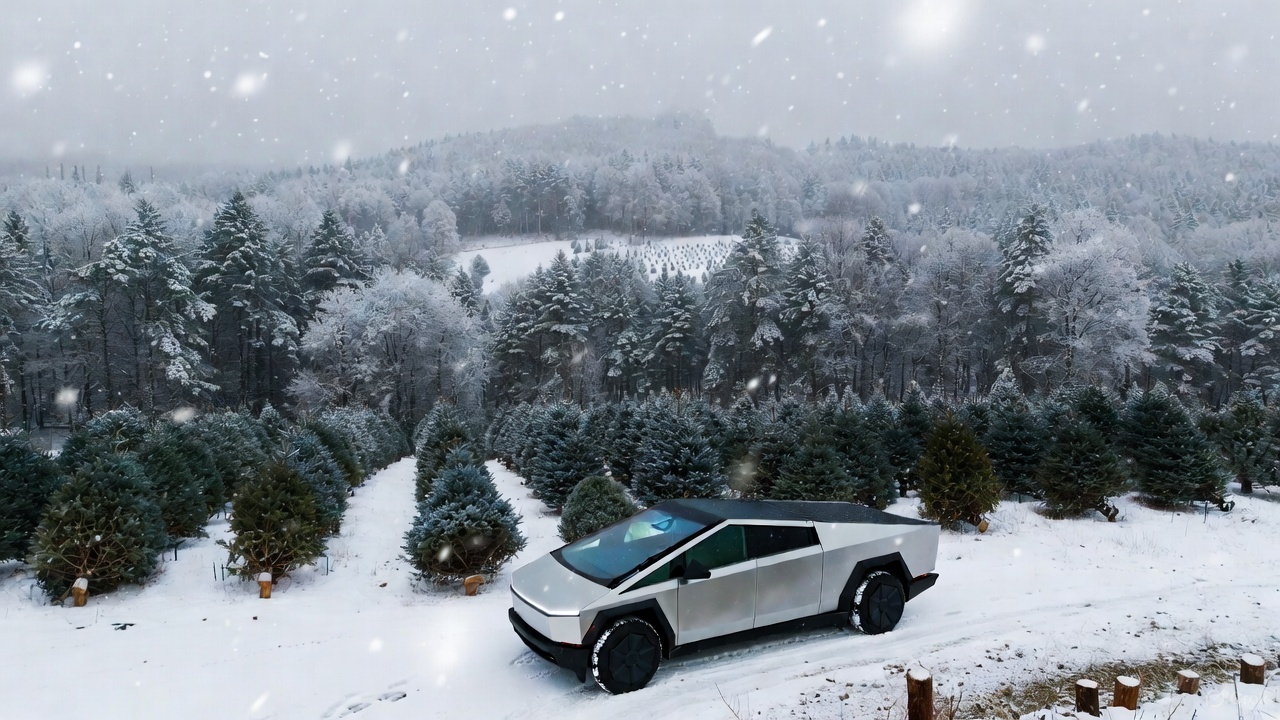
Tesla has started the rollout of the 2025 Holiday Update, as several owners reported it had arrived in their cars via a software update.
Tesla’s Holiday Update is rolling out as Software Version 2025.44.25.1, and includes several new features. We did an extensive breakdown of what was included in another article, but we’ll list the new additions below:
- Grok with Navigation Commands (Beta) – Grok will now add and edit destinations.
- Tesla Photobooth – Take pictures inside your car using the cabin-facing camera
- Dog Mode Live Activity – Check on your four-legged friend on your phone through periodic snapshots taken of the cabin
- Dashcam Viewer Update – Includes new metrics, like steering wheel angle, speed, and more
- Santa Mode – New graphics, trees, and a lock chime
- Light Show Update – Addition of Jingle Rush light show
- Custom Wraps and License Plates – Colorizer now allows you to customize your vehicle even further, with custom patterns, license plates, and tint
- Navigation Improvements – Easier layout and setup
- Supercharger Site Map – Starting at 18 pilot locations, a 3D view of the Supercharger you’re visiting will be available
- Automatic Carpool Lane Routing – Navigation will utilize carpool lanes if enabled
- Phone Left Behind Chime – Your car will now tell you if you left a phone inside
- Charge Limit Per Location – Set a charge limit for each location
- ISS Docking Simulator – New game
- Additional Improvements – Turn off wireless charging pad, Spotify improvements, Rainbow Rave Cave, Lock Sound TRON addition
On Monday, just a few days after Tesla first announced the Holiday Update, people started reporting that it was being deployed to owners.
We noticed a new Tesla software update 2025.44.25.1 on a Model Y AWD LR (2022) in Florida, United States. View the rollout of this update here: https://t.co/rPqISQaNkM
— Teslascope (@teslascope) December 8, 2025
It seems the release is a bit of an apology to a particular group, as it has only made its way to Hardware 3 vehicles, particularly the ones using the AMD Ryzen chip.
Tesla has excluded FSD-purchased and subscribed vehicles that are utilizing Hardware 3, so it seems there is a strategy to this limited rollout.
Two Surprise Additions
Tesla has added two additional features with the Holiday Update, which include a new Storage Space for Dashcam feature that shows how much space you have used and remaining on your USB drive.
Additionally, Tesla gamified Supercharging with a new “Charging Passport” feature, which we reported on earlier today.
